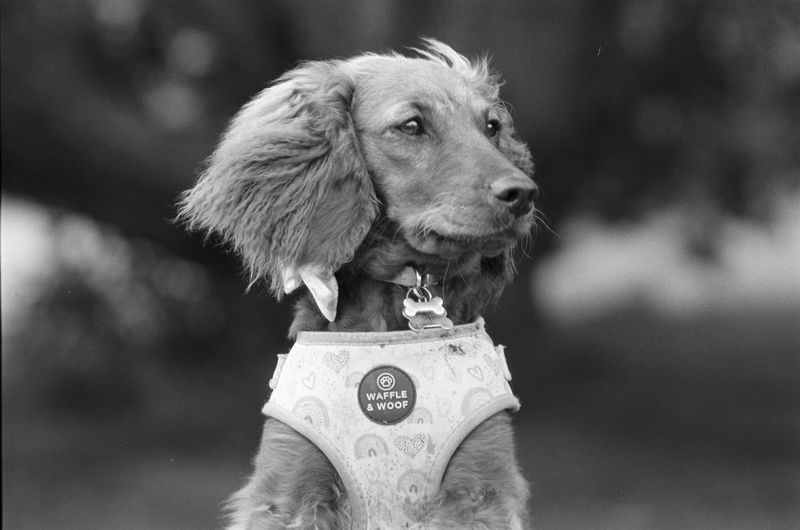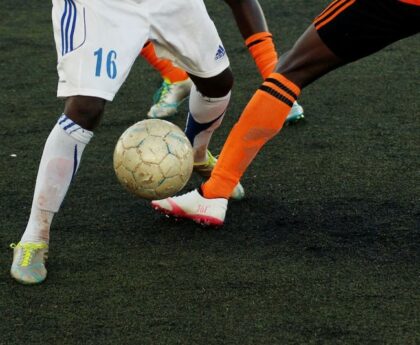Violent Crash at Daytona Raises Safety Concerns in NASCAR
A Terrifying Incident
In a terrifying incident at the Daytona International Speedway, NASCAR Cup Series driver Ryan Preece experienced a violent barrel roll in the closing laps of Saturday’s race. Preece’s car, the No. 41 Ford Mustang for Stewart-Haas Racing, was hit in the rear bumper by Erik Jones, causing it to veer left and collide with teammate Chase Briscoe’s car. The impact lifted the right side of Preece’s vehicle off the ground, resulting in a series of tumbles through the grass on the back straightaway.
Concern for Driver Safety
The crash sent shockwaves through the NASCAR community, once again raising concerns about driver safety and the measures in place to protect them during high-speed accidents. Preece’s car flipped at least 10 times before he emerged from the wreckage under his own power and with assistance from the AMR Safety Team. It is a testament to the advancements in safety protocols that Preece was able to walk away relatively unscathed.
However, this incident serves as a reminder that despite the significant progress made in enhancing driver safety over the years, motorsports still pose inherent risks that must be constantly addressed and mitigated. As vehicles reach higher speeds and the stakes of competition continue to rise, it becomes increasingly vital to ensure the well-being of those who put their lives on the line for the sport.
The Importance of Safety Measures
As NASCAR continues to prioritize safety, it is crucial that the governing body and racing teams collaborate to implement and refine safety measures. This incident at Daytona presents an opportunity to reevaluate existing protocols and explore new innovations that can further protect drivers from the violent forces involved in high-speed crashes.
One area of focus should be improving vehicle design and construction to enhance crash resistance and occupant protection. This includes the development of stronger and more impact-absorbing materials, as well as advanced roll cage designs that can withstand extreme forces. Additionally, ongoing research and development into better restraint systems, such as six-point harnesses, can help to further minimize the risk of injury during rollovers and high-G impacts.
It is also important to continually advance track safety features to reduce the likelihood and severity of crashes. Safety barriers, catch fences, and energy-absorbing materials should be regularly evaluated and upgraded to provide the highest level of protection for drivers and spectators alike.
The Mental and Emotional Toll
While physical injuries are often the most immediate concern after a crash, the mental and emotional toll on drivers should not be overlooked. The fear and anxiety associated with near-fatal incidents can have long-lasting effects on a driver’s psychological well-being, potentially affecting their performance on the track. NASCAR and its teams should prioritize providing comprehensive support and resources for drivers dealing with the emotional aftermath of such traumatic events.
Continuing the Passion for Racing
Ryan Preece’s social media post after the crash exemplifies the resilience and determination that racing drivers possess. Despite the inherent dangers of the sport, a true driver must possess unwavering toughness, both physically and mentally. The pursuit of victory and the adrenaline-fueled passion for racing often push drivers to overcome their fears and get back behind the wheel.
However, it is equally important to strike a balance between courage and safety. Drivers should be able to rely on the comprehensive safety measures and continuous improvements implemented by NASCAR. They must have confidence that the governing body and racing teams prioritize their well-being above all else.
A Call for Constant Vigilance
As the NASCAR community reflects on the Daytona crash, it serves as a reminder that safety is not a one-time accomplishment but an ongoing commitment. The pursuit of innovation, the application of advanced technologies, and a willingness to adapt and learn from each incident are crucial in creating a safer environment for all involved.
If NASCAR intends to continue captivating audiences with the thrilling spectacle of high-speed racing, it must remain vigilant in addressing safety concerns and investing in measures that protect the drivers who make the sport possible.
Conclusion
The violent crash involving Ryan Preece at Daytona International Speedway has once again ignited discussions around driver safety in NASCAR. While Preece’s ability to walk away shows the progress made in safeguarding drivers, it also underscores the need for continued improvements in safety measures. As the sport evolves and technology advances, NASCAR must remain steadfast in its commitment to protecting those who dedicate their lives to racing. Only by doing so can the sport continue to captivate audiences and provide a safe and thrilling experience for everyone involved.

<< photo by Chris Black >>
The image is for illustrative purposes only and does not depict the actual situation.
You might want to read !
- Capturing the Thrills: A Spectacular Glimpse into the 2023 Darlington Raceway Weekend
- The Inspiring Philanthropy and Resilience of Sherry Pollex
- The Resilience of Sherry Pollex: From Partner to Philanthropist
- “Preseason Safety Concerns: Dolphins-Jags Game Suspended After Injury to Key Player”
- “Tony Stewart’s Tragic Loss: Exploring the Fatal Interstate Wreck and NASCAR’s Safety Concerns”
- The state of India’s railway system: Examining safety concerns following train accidents
- Amidst Uncertainty and Determination: NASCAR Driver Ryan Preece Triumphs Over Adversity
- Ryan Preece: Recuperating from a Terrifying Multi-Flip Incident




